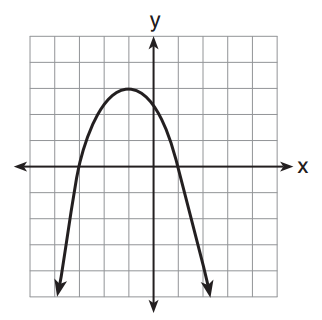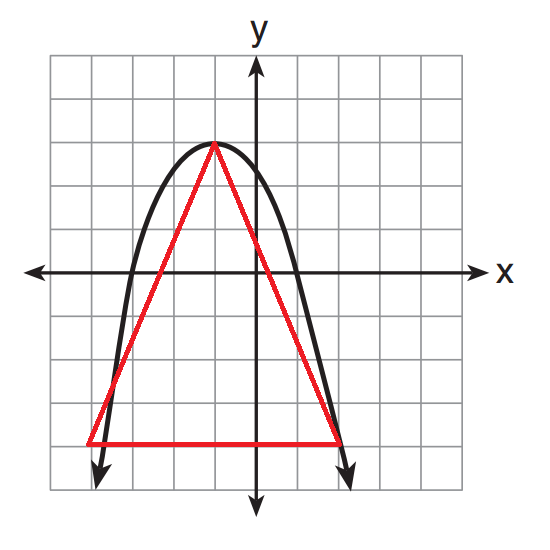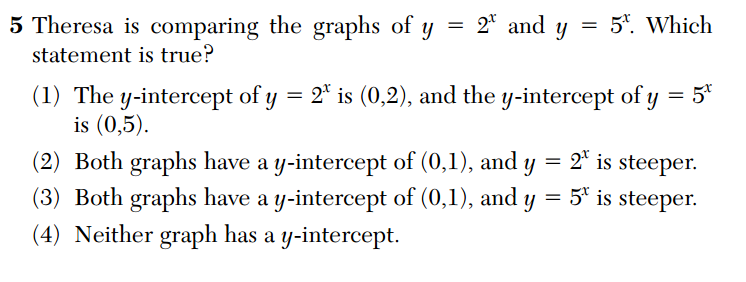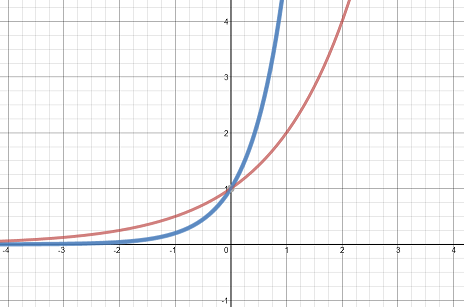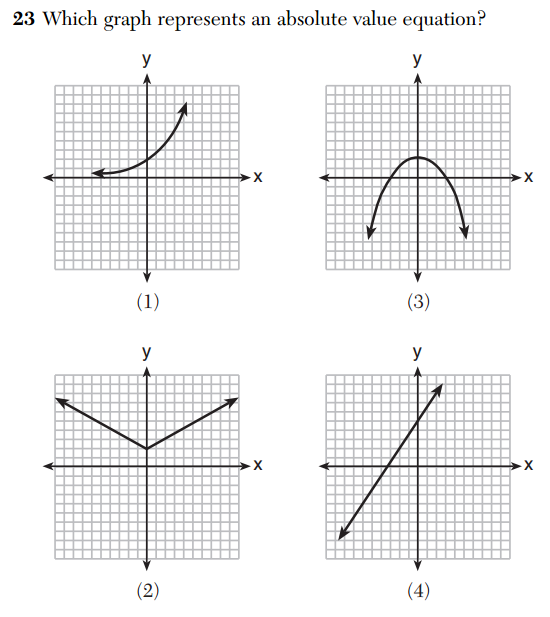Here is another installment in my series reviewing the NY State Regents exams in mathematics.
I have written extensively about the unfaithful graphs presented on Regents exams: non-trigonometric trig functions, non-exponential exponential functions, “functions” that intersect their vertical asymptotes multiple times. I really don’t understand what is so hard about putting accurate graphs on tests.
Here is this year’s example. These are some of the ugliest “parabolas” I have ever seen. I can’t look at these without being mathematically offended.
Not one of these graphs are parabolas. Take a closer look at (3), by far the ugliest purported parabola. Look at how unparabolic this is. It lacks symmetry, and appears to turn into a line at one point!
If this were truly a parabola, we would be able to fit an isosceles triangle inside with vertex on vertex.
Not even close!
It’s a fun exercise to show that the others can’t possibly be parabolas either, which I will leave as to the reader.
Related Posts

